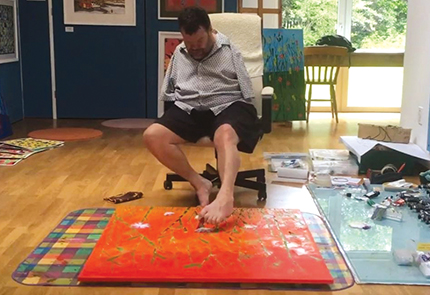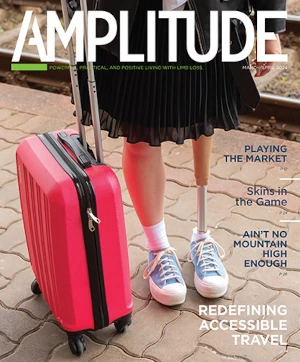Researchers at University College London, England, and Tel Aviv University, Israel, have discovered that people who use their feet like hands can cause organized hand-like maps of the toes in the brain. The findings, published in Cell Reports, demonstrate an extreme example of how the human body map can change in response to experience, such as upper-limb absence or amputation.
“For almost all people, each of our fingers is represented by its own little section of the brain, while there’s no distinction between brain areas for each of our toes,” said the study’s lead author, PhD student Daan Wesselink, UCL Institute of Cognitive Neuroscience and University of Oxford.
“But in other non-human primate species, who regularly use their toes for dexterous tasks like climbing, both the toes and fingers are specifically represented in their brains. Here, we’ve found that in people who use their toes similarly to how other people use their fingers, their toes were represented in their brains in a way never seen before in people.”
The two study participants are professional foot painters in the United Kingdom who paint holding paintbrushes between their toes. They also use their toes regularly for everyday tasks such as dressing themselves, using cutlery and typing. To do what most people would do with their two hands, both artists typically use one foot for highly dexterous tasks while using the other foot to stabilize.

Photograph courtesy of University College London.
Their distinctive experiences extend beyond behavior; by not regularly wearing enclosed footwear, the foot painters get more complex touch experiences on their toes. This may also have impacted brain development of these organized toe maps.
For the study, the foot painters and 21 people born with two hands who served as a control group completed a series of tasks testing their sensory perception and motor control of their toes. The participants then underwent ultrahigh-resolution fMRI brain scanning of the brain’s body area—the somatosensory cortex. While inside the scanner, a researcher tapped the toes of the study participants, first looking for activity in the foot area of the body map.
In the foot painters, specific sections of the brain’s foot area clearly reacted to their toes being touched. Brain maps of individual toes were seen for each artist’s dexterous foot, with a similar but less pronounced pattern showing in their stabilizing foot. The two-handed controls showed no such maps. Other analyses showed the foot painters’ feet were represented in the brain in a hand-like way, but not the control participants’ feet.
The researchers also found that the foot painters’ toes were additionally represented in the part of their brain that would otherwise have served their missing hands. This corresponds with another study from the same lab finding that the brain’s hand area gets used to support body parts being used to compensate for disability, such as the lips, feet, or arms of people who have only one hand.
Perhaps surprisingly, motor tasks showed the foot painters were not any better than controls at wiggling one toe at a time, but they did have heightened sensory perception for their toes compared to controls.
“Our study demonstrates an extreme example of the brain’s natural plasticity, as it can organize itself differently in people with starkly different experiences from the very beginning of their lives,” said the study’s senior author, Tamar Makin, PhD, UCL Institute of Cognitive Neuroscience.
Makin leads the Plasticity Lab at UCL, seeking to further understand how the brain is malleable in order to develop ways to tap into the brain’s innate plasticity, which may inform new rehabilitation approaches or treatments for phantom limb pain. To read more about Makin’s work, visit Brain Represents Prosthetic Hands Like Natural Hands.
This story was adapted from materials provided by University College London.



